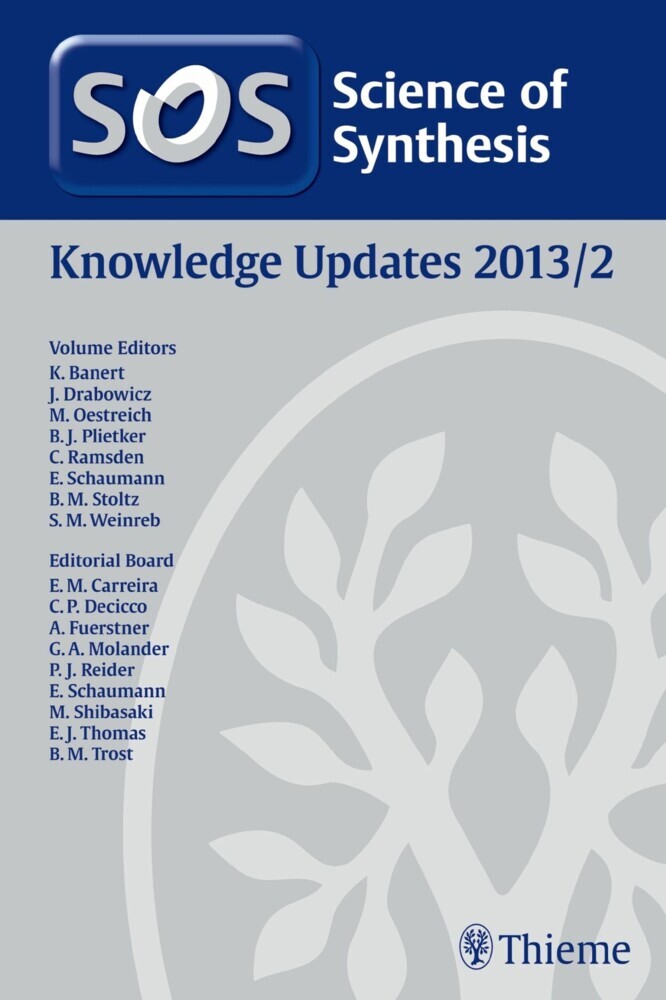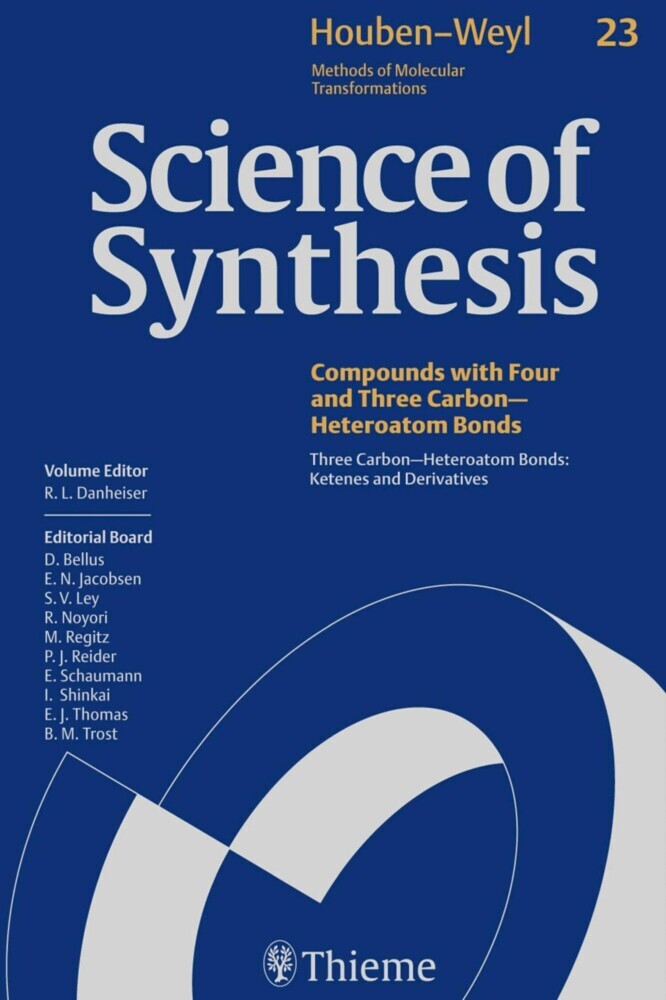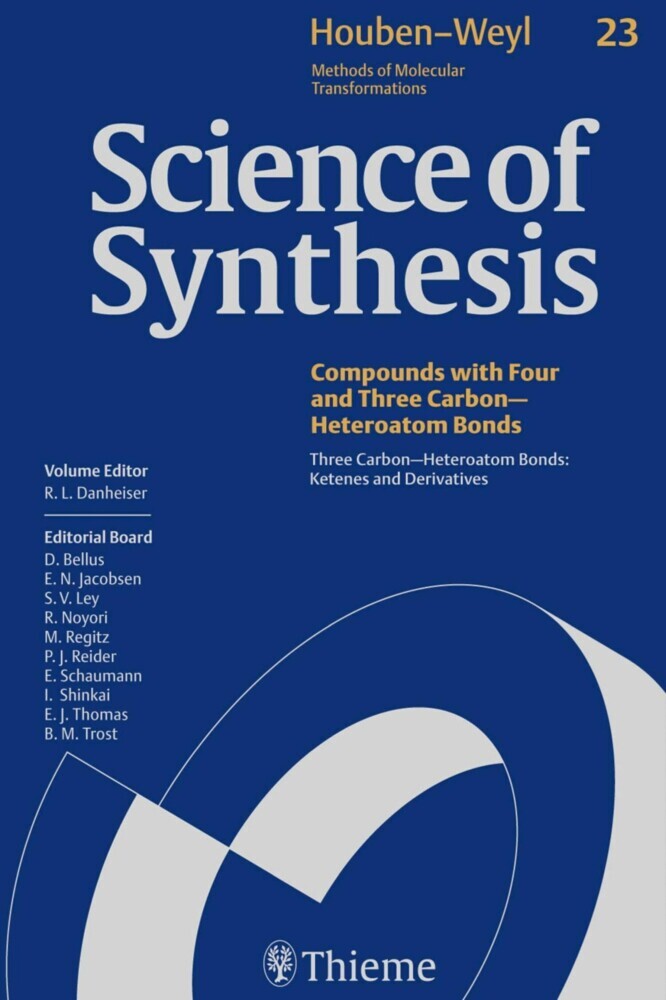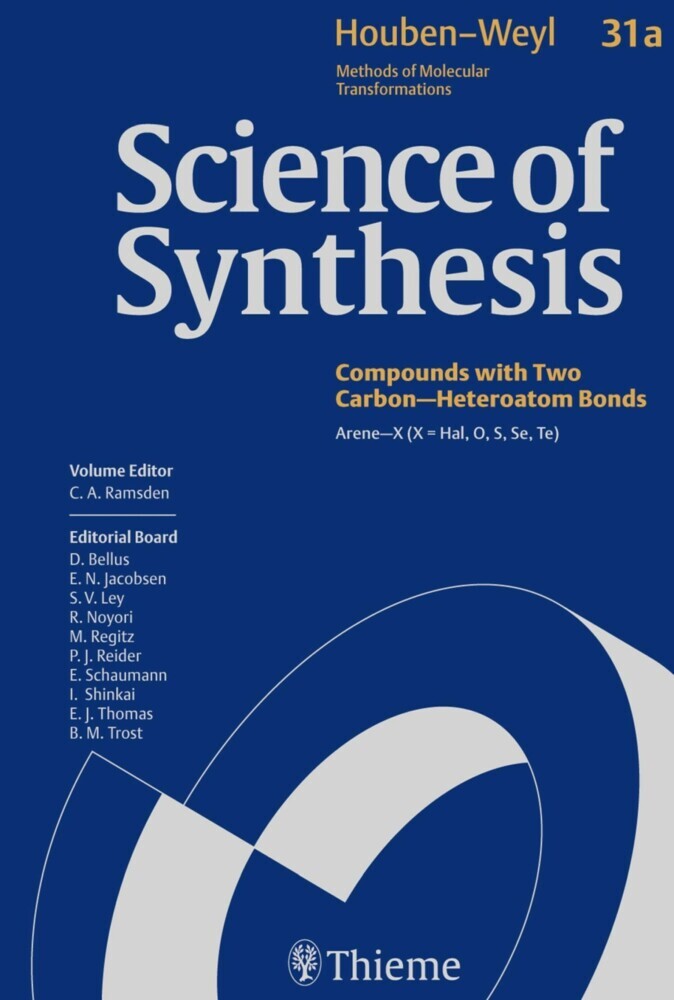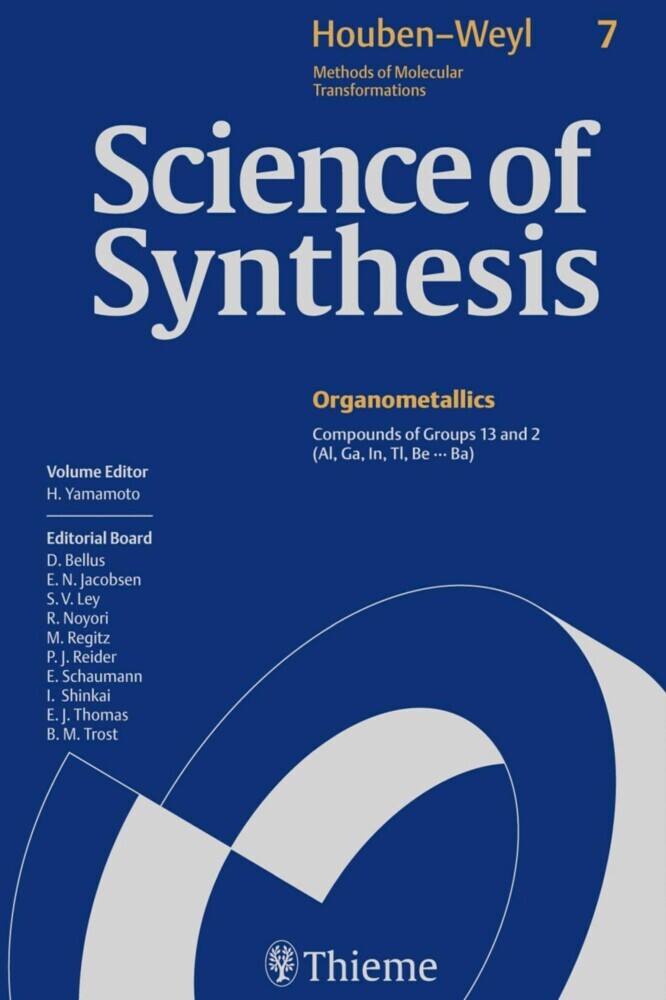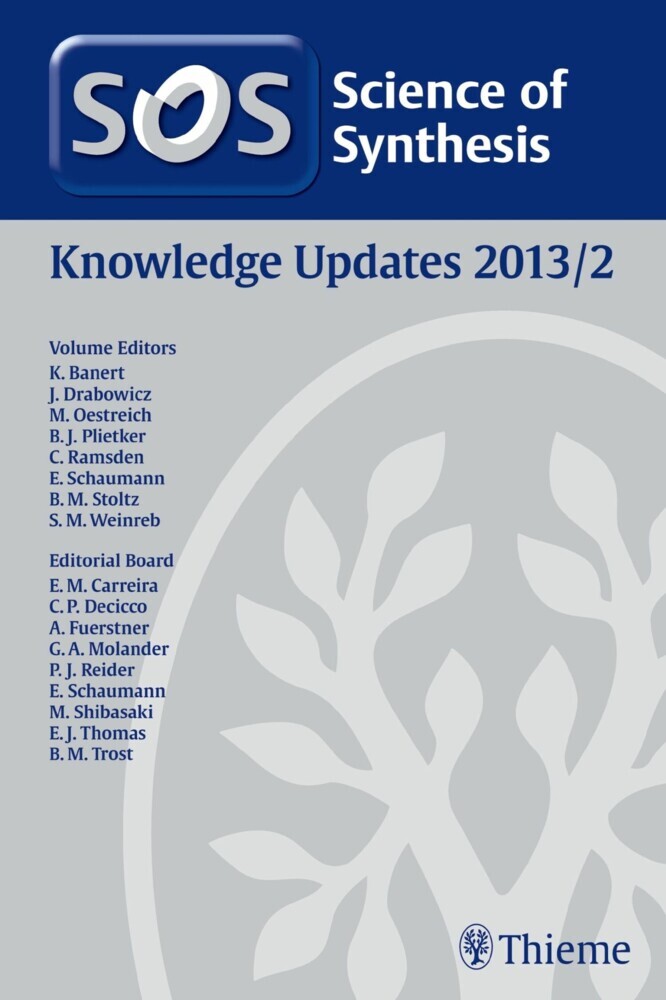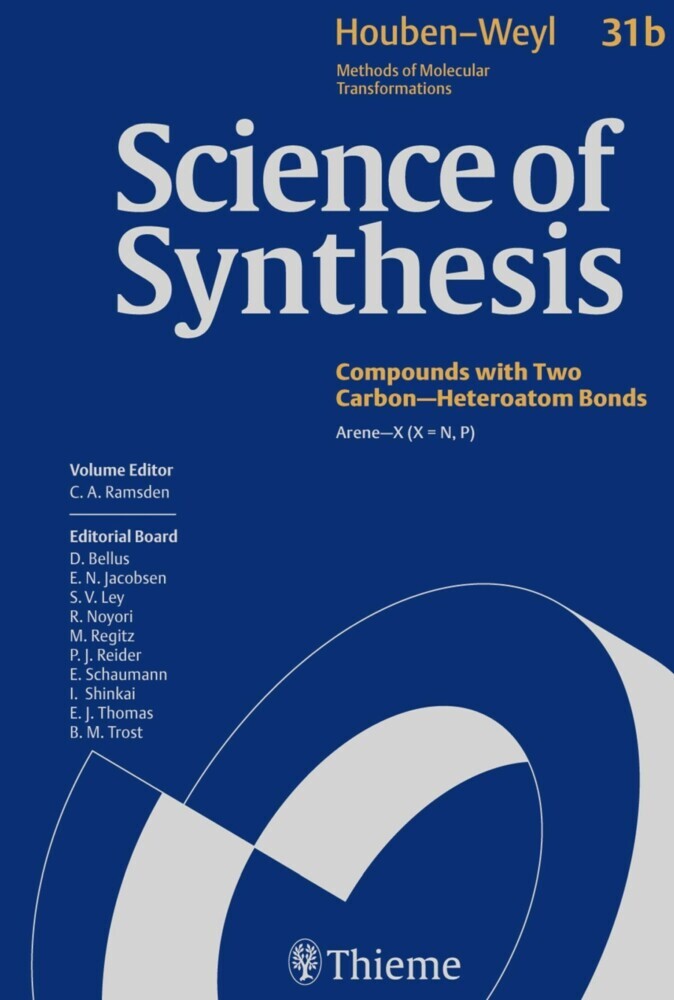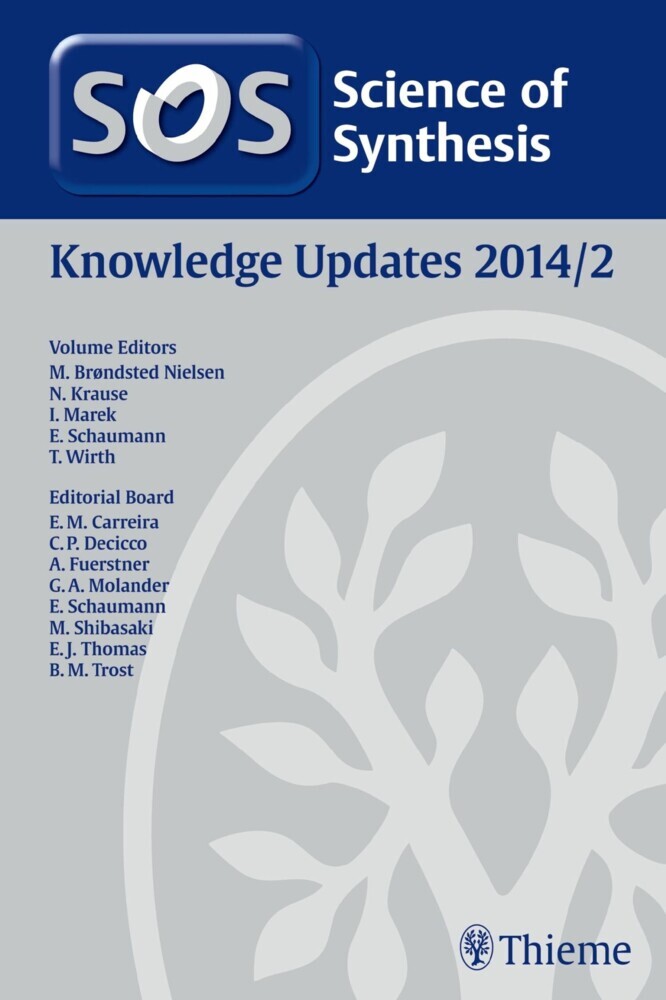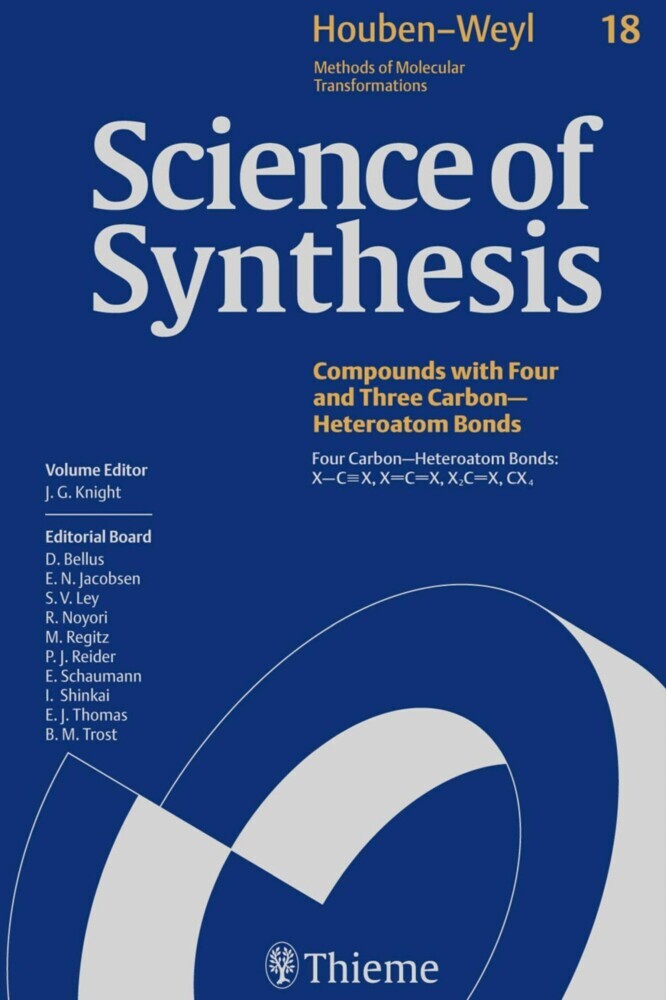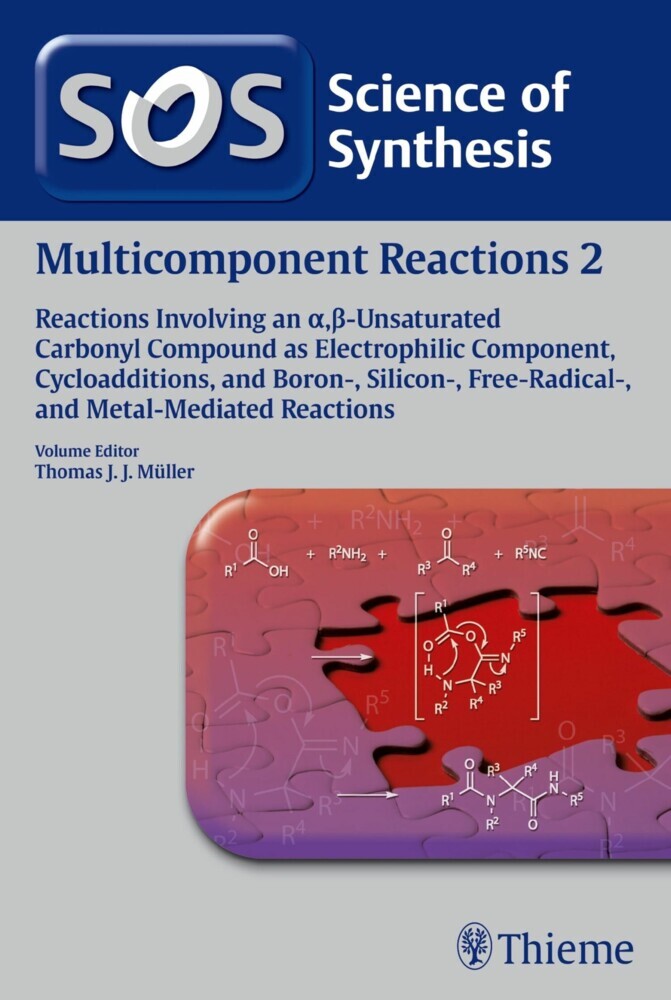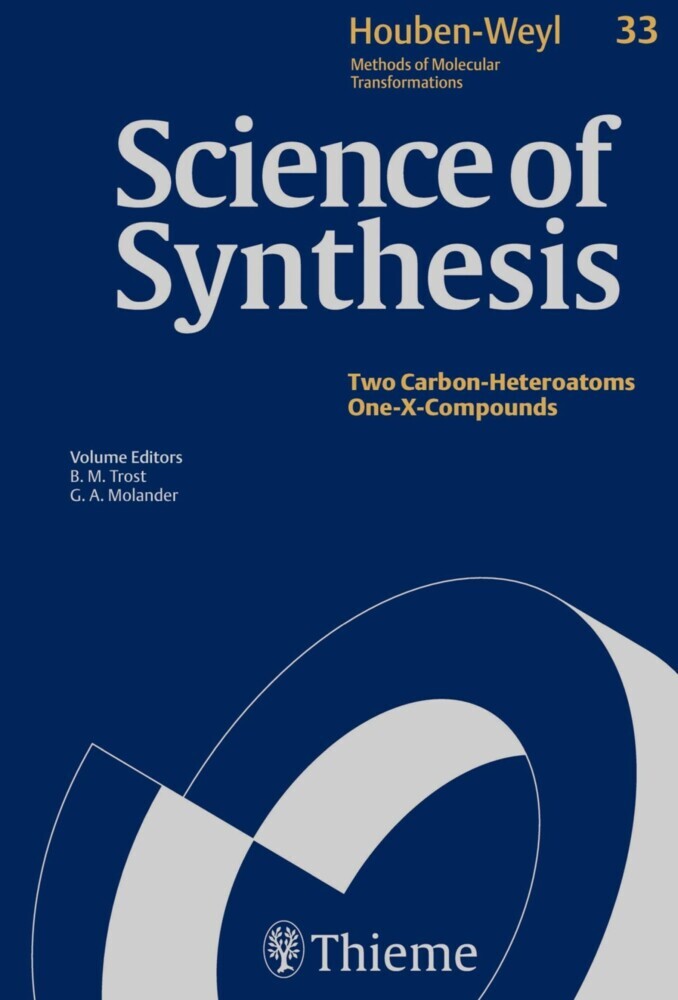Science of Synthesis Knowledge Updates 2013 Vol. 2
Science of Synthesis is a reference work for preparative methods in synthetic chemistry. Its product-based classification system enables chemists to easily find solutions to their synthetic problems.
Key Features:
- Critical selection of reliable synthetic methods, saving the researcher the time required to find procedures in the primary literature.
- Expertise provided by leading chemists.
- Detailed experimental procedures.
- The information is highly organized in a logical format to allow easy access to the relevant information.
The Science of Synthesis Editorial Board, together with the volume editors and authors, is constantly reviewing the whole field of synthetic organic chemistry as presented in Science of Synthesis and evaluating significant developments in synthetic methodology. Four annual volumes updating content across all categories ensure that you always have access to state-of-the-art synthetic methodology.
1;Science of Synthesis: Knowledge Updates 2013/2;1 1.1;Title page;5 1.2;Imprint;7 1.3;Preface;8 1.4;Abstracts;10 1.5;Overview;18 1.6;Table of Contents;20 1.7;Volume 1: Compounds with Transition Metal--Carbon p-Bonds and Compounds of Groups 10-8 (Ni, Pd, Pt, Co, Rh, Ir, Fe, Ru, Os);36 1.7.1;1.1 Product Class 1: Organometallic Complexes of Nickel;36 1.7.1.1;1.1.5 Organometallic Complexes of Nickel;36 1.7.1.1.1;1.1.5.1 Nickel Complexes of 1,3-Dienes;36 1.7.1.1.1.1;1.1.5.1.1 Method 1: Applications in Diene-Diene Cycloadditions;36 1.7.1.1.1.2;1.1.5.1.2 Method 2: Diene-Aldehyde Reductive Coupling;38 1.7.1.1.1.2.1;1.1.5.1.2.1 Variation 1: Triethylsilane-Mediated Reactions;38 1.7.1.1.1.2.2;1.1.5.1.2.2 Variation 2: Triethylborane-Mediated Reactions;39 1.7.1.1.1.2.3;1.1.5.1.2.3 Variation 3: Organoaluminum-Mediated Reactions;40 1.7.1.1.1.2.4;1.1.5.1.2.4 Variation 4: Bismetalative Reductive Coupling Mediated by Main Group Bimetallic Reagents;42 1.7.1.1.1.2.5;1.1.5.1.2.5 Variation 5: Reductive Coupling of Dienes with Other Carbonyl Compounds or Imines;44 1.7.1.1.1.3;1.1.5.1.3 Method 3: Addition of Main Group Elements to Dienes;47 1.7.1.1.1.3.1;1.1.5.1.3.1 Variation 1: Hydroelement Addition to Dienes;47 1.7.1.1.1.3.2;1.1.5.1.3.2 Variation 2: Interelement Addition to Dienes;48 1.7.1.1.1.3.3;1.1.5.1.3.3 Variation 3: Main Group Element/Carbon Nucleophile Addition to Dienes;49 1.7.1.1.1.3.4;1.1.5.1.3.4 Variation 4: Addition of C--H Bonds to Dienes;50 1.7.1.1.2;1.1.5.2 Nickel-Allyl Complexes;51 1.7.1.1.2.1;1.1.5.2.1 Method 1: Oxidative Addition of But-3-enenitriles in the Presence of Lewis Acids;51 1.7.1.1.2.2;1.1.5.2.2 Method 2: Oxidative Addition of Allylic Chalcogenides;52 1.7.1.1.2.3;1.1.5.2.3 Method 3: Oxidative Heterocoupling of Carbonyl Compounds and Dienes;53 1.7.1.1.2.4;1.1.5.2.4 Method 4: Reaction of Nickel-Allyl Complexes with Main Group Organometallics;53 1.7.1.1.2.5;1.1.5.2.5 Method 5: Alkyne Insertion with Nickel-Allyl Complexes;54 1.7.1.1.2.5.1;1.1.5.2.5.1 Variation 1: But-3-enenitrile-Derived Nickel-Allyl Complexes;55 1.7.1.1.2.5.2;1.1.5.2.5.2 Variation 2: Allyl Chalcogenide Derived Nickel-Allyl Complexes;56 1.7.1.1.2.5.3;1.1.5.2.5.3 Variation 3: Nickel-Allyl Complexes Derived from Dimerization of 1,3-Dienes;56 1.7.1.1.2.5.4;1.1.5.2.5.4 Variation 4: Nickel-Allyl Complexes Derived from Dienes and Carbonyl Compounds;57 1.7.1.1.3;1.1.5.3 Nickel-Alkyne Complexes;58 1.7.1.1.3.1;1.1.5.3.1 Method 1: Coupling of Alkynes with Carbon Dioxide;58 1.7.1.1.3.2;1.1.5.3.2 Method 2: Coupling of Alkynes with Carbonyl Compounds;60 1.7.1.1.3.2.1;1.1.5.3.2.1 Variation 1: Coupling of Alkynes with Aldehydes and Ketones;60 1.7.1.1.3.2.2;1.1.5.3.2.2 Variation 2: Coupling of Alkynes with Aldimines;61 1.7.1.1.3.2.3;1.1.5.3.2.3 Variation 3: Coupling of Alkynes with Unsaturated Carbonyl Compounds;63 1.7.1.1.3.3;1.1.5.3.3 Method 3: Reductive Coupling of Alkynes with Epoxides;65 1.7.1.1.3.4;1.1.5.3.4 Method 4: [2 +2+ 2] Cycloaddition with Heterocumulene Partners;66 1.7.1.1.3.5;1.1.5.3.5 Method 5: Reactions of Nickel-Alkyne Complexes with Strained Ring Systems;68 1.7.1.1.3.6;1.1.5.3.6 Method 6: Addition of Main Group Elements to Alkynes;70 1.7.1.1.3.6.1;1.1.5.3.6.1 Variation 1: Hydroelement Additions to Alkynes;70 1.7.1.1.3.6.2;1.1.5.3.6.2 Variation 2: Carbon-Main Group Element Additions to Alkynes;72 1.7.1.1.3.6.3;1.1.5.3.6.3 Variation 3: Direct Carbon-Hydrogen Additions to Alkynes;74 1.7.1.1.3.6.4;1.1.5.3.6.4 Variation 4: Direct Carbon-Carbon Additions to Alkynes;75 1.7.1.1.3.7;1.1.5.3.7 Method 7: Nickel-Aryne Complexes;76 1.7.1.1.4;1.1.5.4 Nickel-Alkene Complexes;78 1.7.1.1.4.1;1.1.5.4.1 Method 1: Alkene Hydrocyanation;78 1.7.1.1.4.2;1.1.5.4.2 Method 2: Alkene Polymerization;78 1.7.1.1.4.3;1.1.5.4.3 Method 3: Alkene Hydroamination;79 1.7.1.1.4.4;1.1.5.4.4 Method 4: Alkene Hydrophosphinylation;80 1.7.1.1.4.5;1.1.5.4.5 Method 5:
Banert, Klaus
Drabowicz, Jozef
Baumgartner, Judith
Durand, A.
| ISBN | 9783131984210 |
|---|---|
| Article number | 9783131984210 |
| Media type | eBook - PDF |
| Copyright year | 2014 |
| Publisher | Georg Thieme Verlag KG |
| Length | 532 pages |
| Language | English |
| Copy protection | Digital watermarking |

